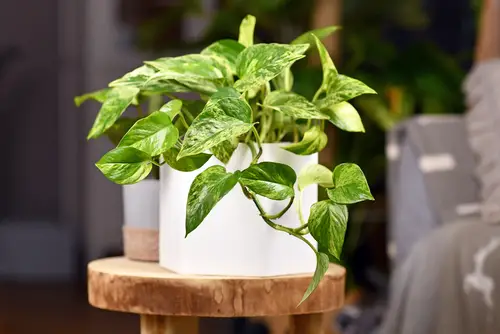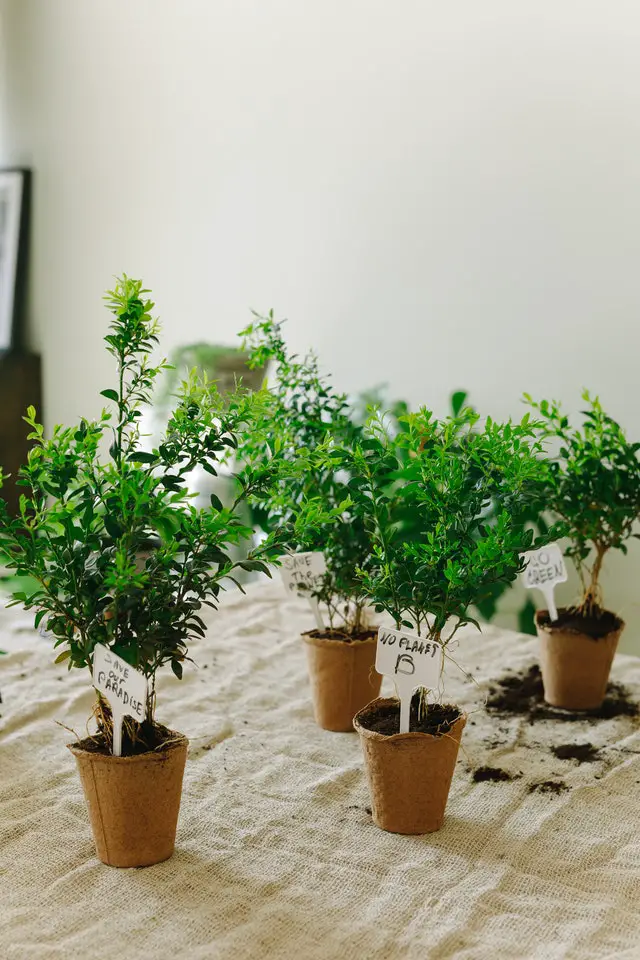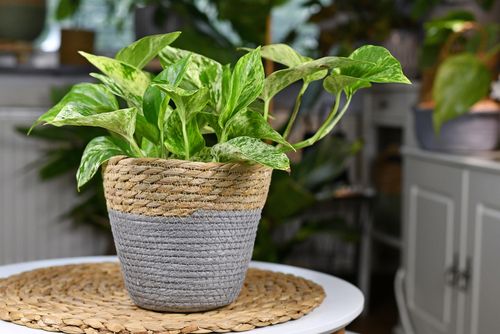Pothos plants are typically very easy to grow, but do Pothos like to be root bound in a tight pot or should they have room to grow? Whether you’re a beginner or a long-time green thumb, learning how to care for your Pothos can help ensure that your plant thrives.
Pothos plants generally do not like to be root bound, though they thrive in a variety of growing conditions and will tolerate small pots better than other indoor plant varieties. If you notice stringiness, yellow leaves, or rotting roots, your Pothos is root bound and should be repotted.
Pothos are fast-growing plants that are great for beginner gardeners. But there are ways to kill your Pothos, or severely limit its growth, including keeping them root bound in a tight pot. Read on so you can identify a root bound Pothos and know what to do about it.
Should I Keep My Pothos Root Bound?

Generally no. While some indoor plants like to be kept in tight pots and grow well in the same pot for many years, Pothos generally prefer to have a lot of room and extra soil for root growth. Typically there would be no advantage to keeping your Pothos root bound, though they may tolerate a small pot for many years before you discover issues like root rot or legginess.
The general rule of thumb for Pothos is to repot every 2-3 years, into a pot that is around 1-2 inches in diameter wider than the old pot. You may not want to pot your plant in a very large pot, as Pothos can grow quite large if the roots are unrestricted.
The best time to repot plants is typically in early spring, since many will be dormant in winter and you will not see any growth. That being said, you can repot your Pothos any time of year if you notice it is root bound or under stress. Pothos generally recover from repotting stress fairly well.
How Do I Know if my Pothos Plant is Root Bound?
Initially, you will notice that the roots are growing around the bottom of the pot in a thick mass. You may even see roots start to grow out of the drainage holes. Some severely root bound plants will even crack their pots if the roots are strong and the pots are thin plastic, terracotta, or porcelain.
If you notice a lot of roots growing at the surface of the soil, or if you pull out your root ball and it looks like more roots than soil, then it needs to be repotted.
If your plant has been root bound for some time, you will eventually notice yellowing or drooping leaves that turn brown and fall, black and rotting roots (root rot), and long stringiness rather than supple growth.
What Happens to a Root Bound Pothos?
Some plants thrive when root bound (to a point) because they are slow growing and don’t need to absorb a lot of nutrients or water from the soil. Pothos is a fast growing plant that needs space in the pot to expand its root system.
If the roots aren’t growing in adequate soil, they will not be able to work correctly. This means they will not provide water and nutrients to the plant, and will not be able to absorb enough water. If roots don’t absorb water adequately, the roots will eventually rot and become unable to support the plant.
If you have noticed that your Pothos plant is stringy like a long vine and not growing into a thick mass, this may also be an indicator that your plant is root bound.
Factors to Consider Before Choosing A Pot
Choosing the right pot for your pothos plant will create the perfect environment for its growth. Here are the factors you need to consider:
1. Drainage
Choose pots with enough drainage holes beneath them. A lack of holes in the container will cause water to gather in the soil. As a result, your plant may suffer from root rot and other fungal diseases. Well-draining pots allow the soil to be moist, not mushy.
2. Size
Select a pot that the root system of your pothos plant can fit comfortably in. Also, it should have enough space to accommodate the root as the plant begins to increase in size. If the container is too small, the pothos growth will be limited. And if the pot is too big, it will continue to retain too much water.
3. Design
Pothos are aesthetically pleasing plants, and deserve to be in attractive containers. Selecting a plain-looking pot for your pothos is like putting a square peg in a round hole; they won’t fit. Even though beautiful containers tend to be more expensive, they’re worth it.
4. Balance
As the pothos begin to grow, they tend to become heavier. So it is better to go for a container that can withstand the weight of the plant as it grows. Containers that are not stable can make your pothos turn over.
How Do I Repot My Pothos Plant?

Find a workspace outdoors or on a table you don’t mind getting dirty (literally!).
Flip the pot over (if you can lift it) and start to loosen the roots. You may have to gently pry them up if they have grown into the drainage holes. Be gentle, but know that Pothos roots are fairly sturdy when healthy. Use a knife or chopstick to loosen as needed.
Remove and shake off as much old soil as possible. You may need to tease apart the roots a little with a chopstick.
Trim black or brown roots with clean scissors. Any mushy or smelly roots have root rot, and this can spread and damage your entire plant. Make sure you disinfect the scissors afterward as well. You can use rubbing alcohol for this purpose.
Fill your new pot one-third to one-half of the way full of potting soil. You can use regular potting soil for Pathos, just make sure it has decent drainage. You will want the top of the roots to be around 2-3 inches from the top of the pot.
Place your plant in the pot and fill in around the roots with soil. Make sure to cover the top of the root ball adequately, but leave room in the top of the pot so you can water your plant.
Water your plant but don’t soak the soil completely. You will want to keep the soil moist for a few days so the roots can adjust. You may need to keep your plant in shade or bright indirect light after repotting so it can recover from stress.
After your plant has adjusted to its new pot, water every 1-2 weeks when the soil is dry to the touch.
Can I Divide My Pothos Plant?
Yes! Pothos are fairly easy to propagate. You will need to use your clean scissors or clippers to separate the roots and stems of each new plant. You can then plant the small sections into small pots just as you would your larger plant.
Learn more from a similar category: Are Orchids Parasites?
Conclusion
So do Pothos like to be root bound or not? Pothos tolerate it better than other indoor plants, so if you are a beginner gardener don’t be scared off by the idea of having a root bound plant. That said, Pothos generally thrive if they are repotted every other year and not allowed to outgrow their pots.
Frequently Asked Questions
How Do I Keep Pothos from Getting Root Bound?
Repot every 2-3 years in a larger pot. Make sure your new pot is 2-3 inches wider in diameter than the old pot, and deep enough for the roots to have room for growth. You can trim the roots once a year if you want to keep your plant in a small pot.
You can also divide your plant if you don’t want a large Pothos plant.
Will Repotting Make My Pothos Fuller?
Yes. Root bound Pothos can get stringy from lack of water, nutrition, and space to grow. You can also trim your plant periodically to encourage more robust growth. Make sure you repot in fresh soil every other year or so, and water your plant every one to two weeks when the soil feels dry.
Which Indoor Plants Like to be Root Bound?
Believe it or not, some indoor plants like to be root bound. Reasons for this differ, but some plants do not require the same amount of moisture or nutrients that others do. In addition, some plants thrive when they feel their environment may be under stress.
Peace lily, Spider Plant, Aloe, Ficus, Umbrella Plant, and African Violets are examples of plants you can leave root bound (though they will still eventually need repotting).

Hey, I’m Lisa and I’ve been an avid gardener for over 30 years. I love writing, talking and living in the garden! Feel free to connect with me on my socials below

